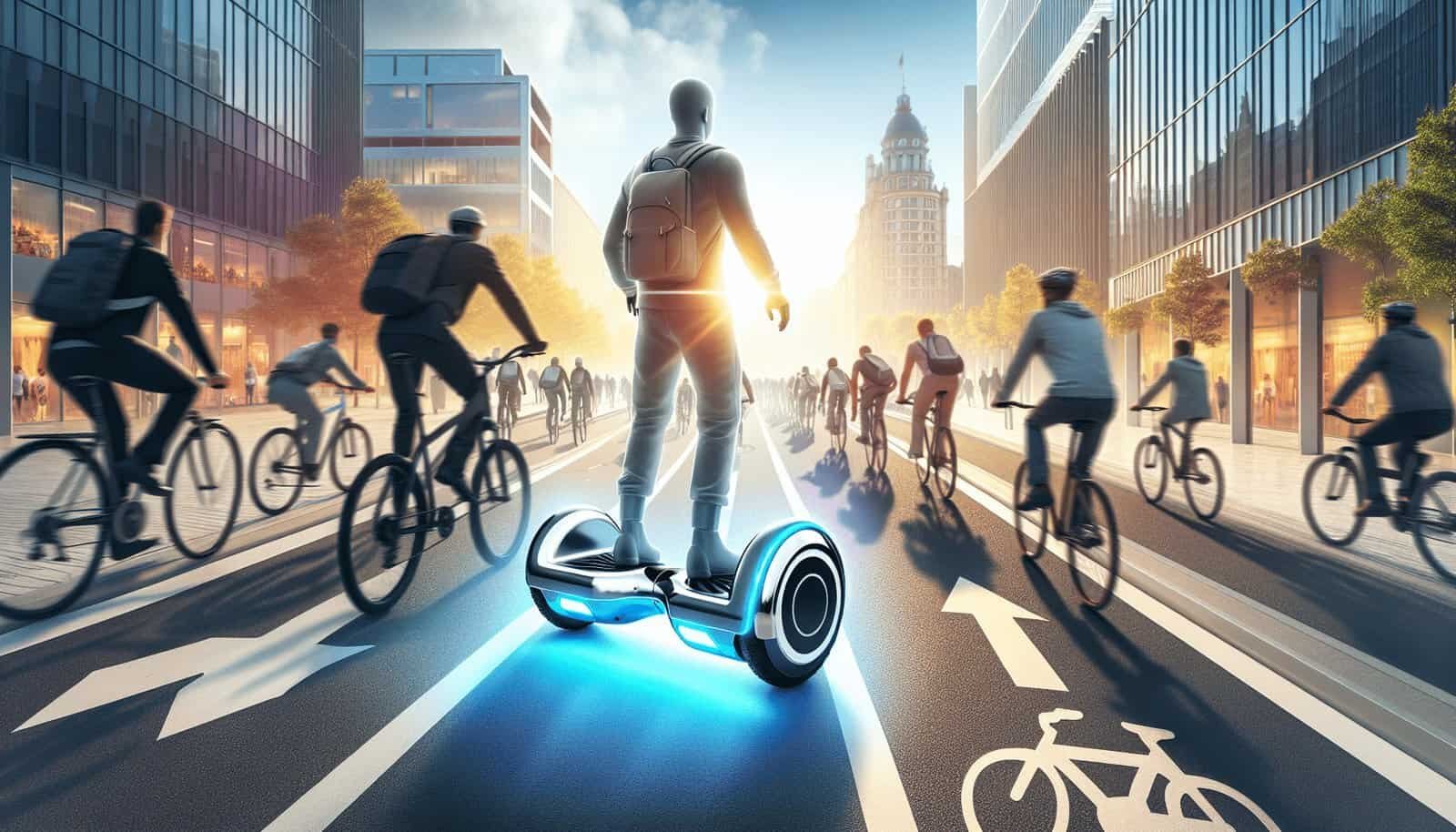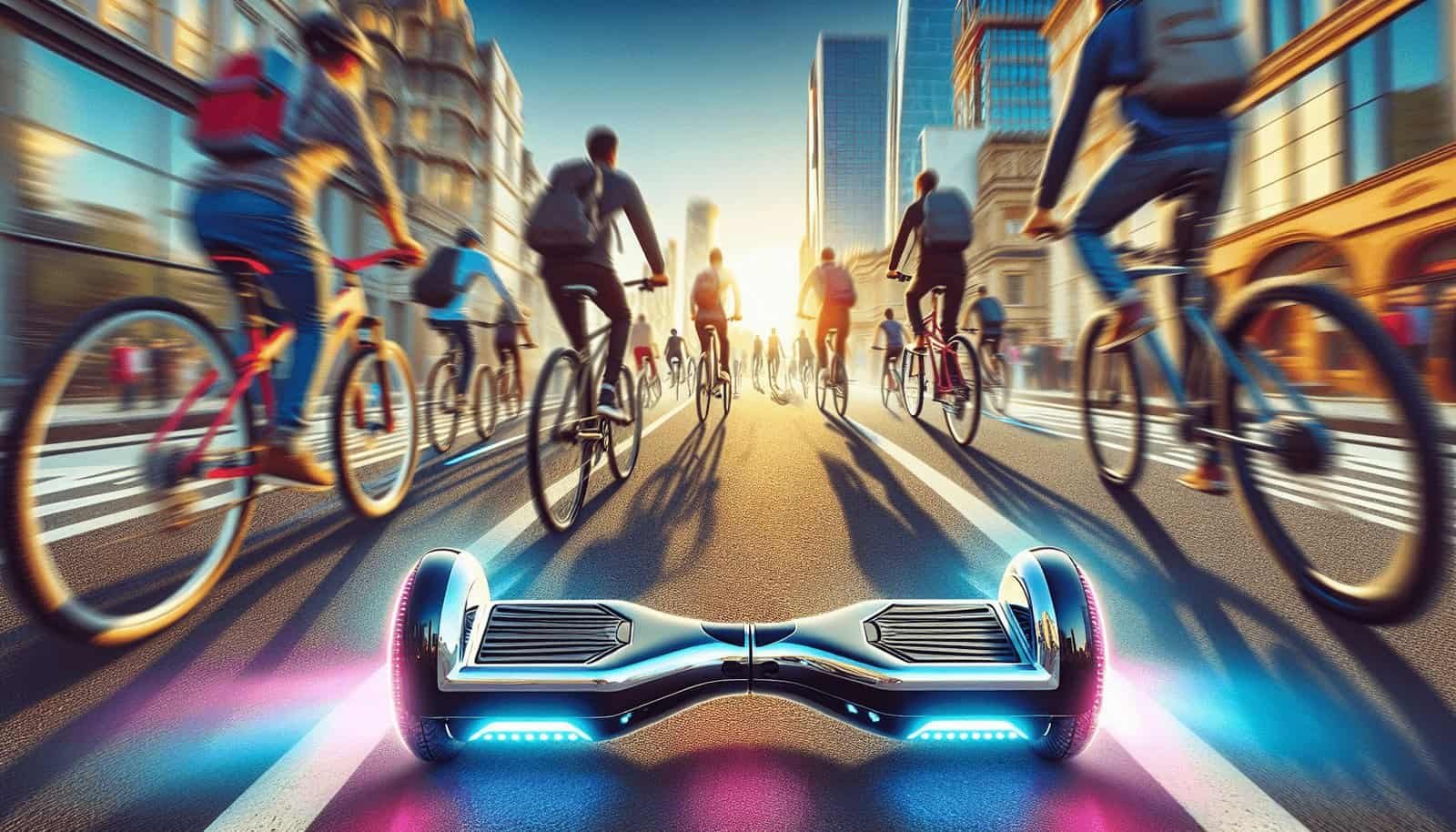Have you ever wondered if you can ride a hoverboard in bike lanes designated for traditional bikes? As our urban landscapes continue to evolve, innovations in personal transportation are becoming more prevalent, raising questions about their use in public spaces. Hoverboards, those sleek, self-balancing devices that seem straight out of a futuristic movie, are becoming an increasingly popular option for urban commuting and recreational activities. However, their integration into existing infrastructure like bike lanes might not be as straightforward as it seems.
Understanding Hoverboards and Bike Lanes
Before diving into the specific question of using bike lanes, let’s get grounded in what hoverboards and bike lanes are all about. Understanding the nature of both can provide insights into why the rules and regulations surrounding them may be the way they are.
What is a Hoverboard?
A hoverboard, despite its misleading name, is a two-wheeled, self-balancing scooter that does not actually hover. It relies on an electric motor to glide along the ground. Users control the hoverboard by shifting their weight, using simple movements to dictate direction and speed. These devices have gained popularity due not only to their convenience and compact size but also because they are environmentally friendly alternatives to gasoline-powered vehicles.
What Constitutes a Bike Lane?
Bike lanes are designated portions of roads specially designed for bicycle traffic. They often provide cyclists with safer, easier access through busy areas while reducing the interaction points with motor vehicle traffic. Bike lanes are typically marked with paint or separated by physical barriers and can vary in size and protective measures depending on local regulations and urban planning.

Rules and Regulations: Hoverboards vs. Traditional Bikes
Regulations regarding the use of hoverboards can vary significantly depending on where you live. This section explores why these differences exist and what common rules tend to apply.
The Legal Landscape
The laws regarding whether you can ride a hoverboard in bike lanes greatly depend on local jurisdiction. Most places do not classify hoverboards as bicycles, which means the typical rights granted to cyclists may not apply. Instead, hoverboards are often considered personal electronic transport devices. This distinction is important when it comes to where you can legally ride a hoverboard.
How Different Regions Define Hoverboards
| Region | Classification | Can Hoverboards Use Bike Lanes? |
|---|---|---|
| United States | Varies by state; often seen as a PEV* | Typically not allowed |
| United Kingdom | Part of personal light electric vehicles | Not allowed |
| Australia | Personal mobility devices | Limited, varies by area |
| Europe | Varies, often as motorized scooters | Generally restricted |
*Personal Electric Vehicle
Why Hoverboards Face Restrictions
Hoverboards’ inability to be categorized as bicycles means they don’t automatically qualify for bike lanes. The hesitation often stems from safety concerns. Hoverboards have different handling and operational profiles, such as lower speeds and different balance mechanisms, which might not align with the flow of bike traffic. These differences can lead to accidents or disruptions, especially in bike lanes that already have a mix of user speeds and styles.

Advantages of Riding Hoverboards in Bike Lanes
While there are restrictions, it’s worth understanding the potential advantages if these rules were relaxed or if jurisdictions provide allowances for hoverboards in bike lanes. Advocates often cite these benefits when pushing for legal changes.
Reduced Traffic Congestion
By allowing hoverboards access to bike lanes, cities could reduce congestion on sidewalks and roads, potentially leading to smoother urban mobility. Given hoverboards’ small footprint, they can contribute to more efficient use of space in often crowded urban areas.
Environmental Impact
Like bicycles, hoverboards offer a more sustainable mode of transport compared to fuel-powered vehicles. Allowing them in bike lanes could incentivize more people to choose hoverboards for short-distance travel, positively impacting air quality and reducing carbon emissions.
Potential for Enhanced Safety
If hoverboard riders are required to use bike lanes instead of sharing sidewalks with pedestrians, it could enhance safety for both groups. Sidewalks are typically busier and involve more interactions with pedestrians, whereas bike lanes provide a more streamlined path that follows the road’s flow.

Challenges and Concerns
Despite the potential for integration, several challenges and concerns must be addressed before hoverboards could be regularly allowed in bike lanes.
Speed and Maneuverability
Hoverboards, on average, operate at lower speeds than bicycles. Generally reaching up to 10-12 mph, they can cause congestion in bike lanes where cyclists might reach speeds of 15-20 mph or more. The difference in speed could lead to unsafe passing maneuvers and potential accidents.
Control and Usage
While bicycles have well-established control mechanisms like brakes and gears, hoverboards rely solely on the rider’s balance and weight distribution for acceleration and deceleration. This reliance on self-balancing technology poses risks, especially in emergency braking situations or when navigating tight spaces where bicycles might have greater maneuverability.
Infrastructure Compatibility
Existing bike lanes vary considerably in design and infrastructure support. Some might be physically separated by barriers, while others are simply road-adjacent paths marked with paint. Not all of these designs are conducive to mixed-use traffic, such as bicycles and hoverboard riders, especially without modifications to accommodate different vehicle types.

Looking Towards the Future: Potential Solutions and Innovations
The conversation around hoverboard use in bike lanes doesn’t end at restrictions. There are possible solutions and innovations that could redefine personal transportation in cities.
Dedicated Multi-Use Paths
One possible solution is creating multi-use paths that cater to a variety of non-pedestrian users, including hoverboards, electric scooters, and bicycles. Such paths would require careful planning and design to ensure safety and efficiency, but they could serve as a versatile alternative to traditional bike lanes.
Regulation Adjustments
Regulators could adapt existing laws to accommodate hoverboards in specific circumstances, allowing them to use bike lanes during off-peak hours or in areas with wide enough lanes to safely support mixed traffic.
Improved Device Technology
Another approach could focus on the technological advancement of hoverboards themselves. A push for models with improved speed regulation, braking systems, or even adaptive technologies to better handle urban environments might make them more suitable for shared paths with bicycles.

Conclusion: Navigating the Right Path
The issue of whether you can ride a hoverboard in bike lanes designated for traditional bikes is complex and multifaceted. As cities evolve and the popularity of diverse personal mobility devices grows, so too will the conversation around integrating these devices into existing infrastructure. Addressing the mixed needs of commuters, pedestrians, and cyclists will require thoughtful urban planning and regulatory adjustments.
Ultimately, fostering safer, more convenient methods for personal transportation will benefit from ongoing discussions, community input, and technological advancements. So, next time you step onto your hoverboard or saddle up a bike, consider the wider urban ecosystem around you, and ponder what the future might hold for all modes of transport that we, as a society, embrace.

